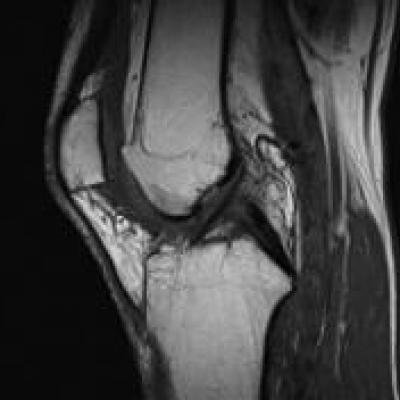Injuries of the anterior cruciate ligament
Injuries of the anterior cruciate ligament are particularly common and develop either under the circumstance of external rotation movements of the leg with a fixed lower leg and bending at the same time or due to hyperextension injuries (particularly frequent for football player, skiers and snowboarders, martial artists or skaters etc.).
Primarily the diagnosis is performed clinically during the examination. As an additionally supporting diagnosis X-rays and magnetic resonance tomography (MRT) can be used.
The problem of a cruciate ligament injury is the instability. The patient has a feeling as if his knee would slide away („giving-way attack“). Due to the (then mostly chronic) instability of the knee joint an overload of the other stabilizers of the knee joint takes place, so that, especially in case of sporty patients, other additional injuries and cartilage damages of the knee appear.
Due to these reasons the operation is generally recommended to top and recreational athletes.


In case of sporty patients the cruciate ligament surgery should be performed within 14 days after the injury, so that the recovery time remains as short as possible. Furthermore, in such cases common damages to the meniscus can be treated at the same time. Injuries of the collateral ligament meanwhile do not have to be treated in most cases. After 10-14 days an infectious reaction of the knee joint appears including the danger of a post-operative restriction of mobility, so that after the expiration of the surgery window a waiting period of ca.6-8 weeks until the next possible date for a surgery occurs.
The surgery is adapted to the sporty needs, the physical stress at work and the age of the patient and to the condition of the joint. The cruciate ligament can either be sewn and additionally stabilized or replaced partly or completely with a tendon. In over 90 % of the patients the cruciate ligament replacement surgery can achieve full function, mobility and power.





